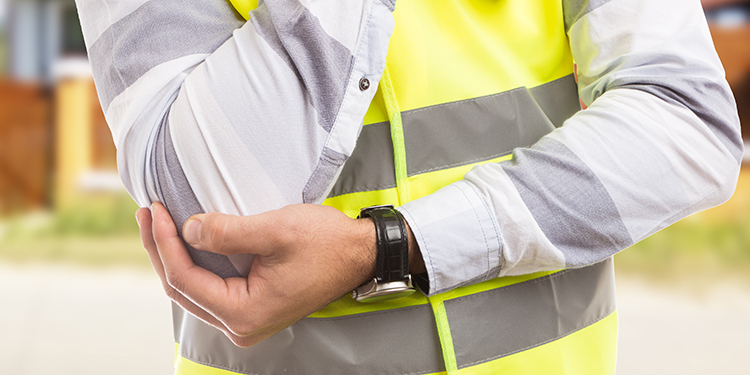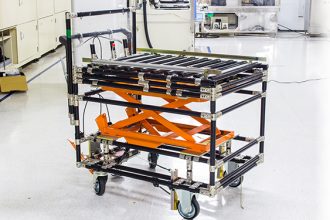Prevent Arm Injuries With These Ergonomic Assist Systems

This post is part of the EASE Educational Series: Ergonomic Solutions from Head to Toe
General warehousing and storage workers suffered 970 arm injuries that kept them out of work for several days in 2019, according to the Bureau of Labor Statistics’ most recent figures documenting nonfatal injuries and illnesses. Their peers in refrigerated warehousing and storage fared only slightly better, with 940 documented arm injuries. Additionally, such injuries account for an average workers’ compensation claim of $46,205, per research by the National Safety Council.
Arm injuries associated with manual material handling often involve the elbow and are frequently caused by repetitive movement and overuse. By implementing certain types of ergonomic assist equipment, however, the risk of an employee injuring one or both arms on the job can be minimized. These systems help associates perform tasks safely while reducing the impact of performing repetitive motions. Solutions include:
Customizable Workstations: Whether in the production area or the packaging department, having all tools and equipment at the proper heights and within easy reach as the job is being performed is vital to minimizing repetitive stress and strain. Ergonomic workstations that have been designed to limit arm movement when handling materials feature accessories that keep all necessary tools within a compact area. Because the worker has all required items immediately at hand, strain on the forearms and elbows can be reduced. Additionally, should the job performed at the workstation changes, many stations can be flexibly reconfigured on the fly, increasing productivity and reducing downtime.
Easy Rolling Casters: Used primarily on carts and bins, casters can reduce strain on many parts of the body — including the forearms and elbows — by design. Capable of rotating 360-degrees so the wheel can roll in any direction, casters permit greater maneuverability around corners. When outfitted with harder tread materials (such as nylon, polypropylene, steel or cast iron), they have lower starting and rolling resistance, and are less affected by compression caused by a heavy load. This means they require less manual force for pushing and pulling, minimizing exertion on elbows and forearms.
Pallet Handling Equipment: Various systems are available for placing loaded pallets at just the right height for loading and unloading, and for removing empty pallets when the work is complete. Systems such as lift tables and pallet positioners (with or without turntables) support and lift loads from the bottom to keep them at the ideal ergonomic height with less bending, stretching, and reaching. Stackers move, raise and lower loads to comfortable, ergonomic work heights as the pallet rides on a platform, adjustable forks or fixed forks attached to a mast. Pallet inverters can transfer entire loads from one pallet to another, thus eliminating all manual material handling. Each of these solutions significantly reduces the risk of elbow or forearm strains.
Looking for more ways to improve ergonomics in your manual material handling operation? Download the free publication, “Ergonomic Guidelines for Manual Material Handling,” published by the members of MHI’s Ergonomic Assist Systems & Equipment (EASE) Industry Group.



